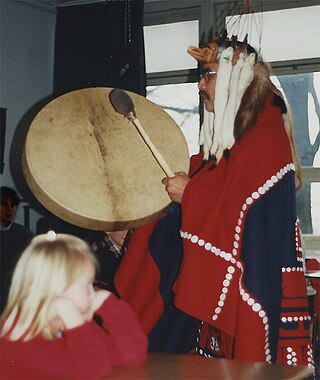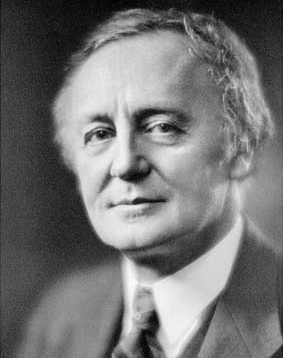
The Tsimshian are an Indigenous people of the Pacific Northwest Coast of North America. Their communities are mostly in coastal British Columbia in Terrace and Prince Rupert, and Metlakatla, Alaska on Annette Island, the only reservation in Alaska.

The Skeena River is the second-longest river entirely within British Columbia, Canada. Since ancient times, the Skeena has been an important transportation artery, particularly for the Tsimshian and the Gitxsan—whose names mean "inside the River of Mist", and "people of the River of Mist," respectively. The river and its basin sustain a wide variety of fish, wildlife, and vegetation, and communities native to the area depend on the health of the river. The Tsimshian migrated to the Lower Skeena River, and the Gitxsan occupy territory of the Upper Skeena.

The Nisga’a, formerly spelled Nishga or Niska, are an Indigenous people in British Columbia, Canada. They reside in the Nass River valley of northwestern British Columbia. The origin of the term Niska is uncertain. The spelling Nishga is used by the Nishga Tribal Council, and some scholars claim that the term means 'people of the Nass River'. The name is a reduced form of, which is a loan word from Tongass Tlingit, where it means 'people of the Nass River'.

Charles Marius Barbeau,, also known as C. Marius Barbeau, or more commonly simply Marius Barbeau, was a Canadian ethnographer and folklorist who is today considered a founder of Canadian anthropology. A Rhodes Scholar, he is best known for an early championing of Québecois folk culture, and for his exhaustive cataloguing of the social organization, narrative and musical traditions, and plastic arts of the Tsimshianic-speaking peoples in British Columbia, and other Northwest Coast peoples. He developed unconventional theories about the peopling of the Americas.

The Tsimshianic languages are a family of languages spoken in northwestern British Columbia and in Southeast Alaska on Annette Island and Ketchikan. All Tsimshianic languages are endangered, some with only around 400 speakers. Only around 2,170 people of the ethnic Tsimshian population in Canada still speak a Tsimshian language; about 50 of the 1,300 Tsimshian people living in Alaska still speak Coast Tsimshian. Tsimshianic languages are considered by most linguists to be an independent language family, with four main languages: Coast Tsimshian, Southern Tsimshian, Nisg̱a’a, and Gitksan.
The Laxsgiik is the name for the Eagle "clan" (phratry) in the language of the Tsimshian nation of British Columbia, Canada, and southeast Alaska. It is considered analogous or identical to identically named groups among the neighboring Gitksan and Nisga'a nations and also to lineages in the Haida nation.
The Ganhada is the name for the Raven "clan" (phratry) in the language of the Tsimshian nation of British Columbia, Canada, and southeast Alaska. It is considered analogous or identical to the G̱anada (Raven/Frog) Tribe of the Nisga'a nation in British Columbia and the Frog clan among B.C.'s Gitxsan nation. The Gitxsan also sometimes use the term Laxsee'le to describe the Frog clan.

Gitxsan are an Indigenous people in Canada whose home territory comprises most of the area known as the Skeena Country in English. Gitksan territory encompasses approximately 35,000 km2 (14,000 sq mi) of land, from the basin of the upper Skeena River from about Legate Creek to the Skeena's headwaters and its surrounding tributaries. Part of the Tsimshianic language group, their culture is considered to be part of the civilization of the Indigenous peoples of the Pacific Northwest Coast, although their territory lies in the Interior rather than on the Coast. They were at one time also known as the Interior Tsimshian, a term which also included the Nisga'a, the Gitxsan's neighbours to the north. Their neighbours to the west are the Tsimshian while to the east the Wetʼsuwetʼen, an Athapaskan people, with whom they have a long and deep relationship and shared political and cultural community.
The Kitkatla or Gitxaala are one of the oldest First Nations whose unceded territories are now occupied by the Canadian province of British Columbia, and inhabit a village, also called Kitkatla, on Dolphin Island, a small island just by Porcher Island off the coast of northern B.C. Because of their location, the Gitxaała have sometimes been called Porcher Island Indians. They were also, in the early contact period, called the Sebassa tribe, for their paramount chief at the time, Ts'ibasaa. The name Kitkatla derives from the name Gitxaała, from git- and kxaała, since they are the farthest from the mainland. Another name that inland-based neighbors use in reference to the Gitxaała is, 'Gitlaxmoon in recognition of their coastal presence on the islands and inlets of this rugged piece of coastline. Gitxaała don’t refer to themselves as Gitlaxmoon or as Ts’msyen.
Kitselas, Kitsalas or Gits'ilaasü are one of the 14 tribes of the Tsimshian nation of British Columbia, in northwestern Canada. The original name Gits'ilaasü means "people of the canyon." The tribe is situated at Kitselas, British Columbia, at the upper end of Kitselas Canyon, which is on the Skeena River. It was once a great trading nexus, just outside and upriver from the city of Terrace. It is the most upriver of the 14 tribes and it borders the territory of the Gitxsan nation.
The Giluts'aaẅ are one of the 14 tribes of the Tsimshian nation in British Columbia, Canada, and one of the nine of those tribes making up the "Nine Tribes" of the lower Skeena River resident at Lax Kw'alaams, B.C. The name Giluts'aaw means literally "people of the inside". Their traditional territory is the area around Lakelse Lake, near present-day Terrace, B.C., at the Skeena River.
The Ginadoiks are one of the 14 tribes of the Tsimshian nation in British Columbia, Canada, and one of the nine of those tribes making up the "Nine Tribes" of the lower Skeena River resident at Lax Kw'alaams, B.C. The name Ginadoiks means literally "people of the rapids". Their traditional territory is the watershed of the Gitnadoiks River, a tributary of the Skeena. Since 1834, they have been based at Lax Kw'alaams, when a Hudson's Bay Company fort was established there.
The Gispaxlo'ots are one of the 14 tribes of the Tsimshian nation in British Columbia, Canada, and one of the nine of those tribes making up the "Nine Tribes" of the lower Skeena River resident at Lax Kw'alaams, B.C. The name Gispaxlo'ots means literally "people of the place of elderberries." Their traditional territory includes an area on the Skeena River between present-day Terrace and Prince Rupert. Since 1834, when a Hudson's Bay Company trading fort was established at Lax Kw'alaams, they have been based there. Their chief Ligeex permitted the HBC to build on Gispaxlo'ots territory.
The Gits'iis are one of the 14 tribes of the Tsimshian nation in British Columbia, Canada, and one of the nine of those tribes making up the "Nine Tribes" of the lower Skeena River resident at Lax Kw'alaams, B.C.

William Beynon (1888–1958) was a Canadian hereditary chief of the Tsimshian Nation and an oral historian; he served as ethnographer, translator, and linguistic consultant to many anthropologists who studied his people.
The Laxgibuu or Laxgyibuu is the name for the Wolf "clan" (phratry) in the language of the Tsimshian nation of British Columbia, Canada, and southeast Alaska. It is considered analogous or identical to identically named clans among the neighboring Gitksan and Nisga'a nations.
Walter George Wright was a Canadian hereditary chief of the Tsimshian from the community of Kitselas, near Terrace, British Columbia, whose extensive knowledge of oral history was published posthumously in book form as Men of Medeek.
Frederick Alexcee was a Canadian carver and painter from the community of Lax Kw'alaams with Tsimshian ethnicity.

The Nisga'a and Haida Crest Poles of the Royal Ontario Museum are a collection of four large totem poles, hand carved from western red cedar by the Nisga’a people and Haida people of British Columbia's coast. The poles are referred to as: Three Persons Along (Nisga'a); the Pole of Sag̱aw̓een (Nisga'a); the Shaking Pole of Kw’ax̱suu (Nisga'a); and House 16: Strong House Pole (Haida). Each of the crest poles tell a family story, as carved figures represent crests that commemorate family history by describing family origins, achievements and experiences. These memorial poles were typically placed in front of the owners' house along the beach.

The Bell-Irving River is a tributary of the Nass River in northwestern British Columbia, Canada. It originates in the Sacred Headwaters region, and flows about 165 km (103 mi) south to the Nass River. It course lies between the Oweegee Range of the Skeena Mountains to the east and the Boundary Ranges of the Coast Mountains to the west.








